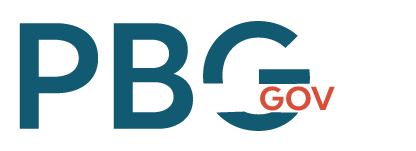The Mission Depends on It: Business Agility in the Government Environment
When it comes to agility, the needs of government organizations and commercial ones are not very different. Just like our private sector counterparts, the public sector requires the ability to keep pace with technological innovations, the digital economy, the rapid rate of change, and artificial intelligence. We could argue, though, that the government’s need for agility is far more important, with modern federal missions addressing everything from massive ongoing threats from cybersecurity to public health. Government agencies are tasked with delivering a staggering array of citizen services across a broad range of domains—public health care, transportation and safety, education, and much more.
Whether modernizing legacy systems, embracing digital transformation, or optimizing collaboration practices across departments and agencies, speed and adaptability are key components of any successful change. Business agility—the pace at which we make decisions and deliver our work—is a strategic approach that involves embracing change, engaging teams, and deploying resources quickly and efficiently, and it’s not just for commercial enterprises. The same practices that are widely adopted and successful in the private sector can and should be applied to public organizations. By cultivating the agile approach in the public sector, government agencies can transform how they work to effectively manage complexity, reduce risk, mitigate threats, be resilient and adaptable, and pivot as needed. An agile government means better performance, improved response time, and modern services for citizens, thereby improving public trust and confidence.
A Foundation from the Ground Up
Business agility is much more than creating scrum teams, holding daily stand-ups, and leveraging new technology. The agile approach provides a framework with principles and practices that—with the right support—will morph from behaviors into habits. However, true business agility can only be achieved through a comprehensive partnership between technology and the functional teams throughout the agency. This shared vision among the “doers” is what shifts behaviors and ultimately mindsets, improving workflow practices at all levels.
The cultural change at this scale can take three to five years to become the identity of an agency. However, by implementing agile processes from the ground up, rather than imposing business agility as a methodology from the top down, the transformation can pervade work processes at all levels, faster.
Key Components of Business Agility: Aligning Vision, Strategy, and Execution
If the cultural timeline of 3-5 years sounds frustratingly long, be assured that there are key components that can be put into place right now to drive your organization along the transformative path:
- Strategy & Roadmap: The agile roadmap is designed to facilitate incremental progress toward shared objectives. To ensure a clear path from high-level vision to strategic plan at the team and program level, emphasize the significance of the future state and the overarching goals. The future state serves as the North Star, the beacon that leads every level of the organization to commit to a product-aligned approach with agile teams. To start from the ground up, this can be done on a single value stream, project, or product and expanded as fluency with the concept increases.
- People & Mindset: The success of business transformation relies on trust, both in your teams and in your partners, which is established by laying the groundwork for a comprehensive change in mindset, beliefs, and values of your employees. To build trust in the new structure and practices of business agility, start small by implementing changes in workflow patterns and introducing an agile structure with team ceremonies (iteration planning, daily standups, iteration review, iteration retrospective, and product backlog reviews).
- Effective Leadership: Gain support and commitment at the highest levels. Although business agility grows from the ground up, leadership must be willing to support and nurture the environment for it to take root and thrive.
- Technology: Notice that technology is last on this list. That’s because agile business practices can be applied to virtually any product or service and don’t require a specific technology. Increase your organization’s awareness of agile capabilities and project management tools, such as Atlassian, Rally, and SpiraPlan. Train and recruit talent both for skill set and mindset.
Becoming the (Agile) Change You Want to See
The drivers for pursuing business agility are twofold: the imperative to continuously improve, and the need to stay one step ahead of real threats and be prepared to seize technological and political opportunity. Unlike the private sector, the public sector must balance the need to produce at speed with limited budgets, bureaucratic processes and regulations, and a variable political climate. An agile agency has the technology and tactics to tackle both obstacles and innovations while delivering commercial-quality services for citizens. As we look to the future, business agility will continue to be a critical component of public services, and the agencies that embrace it will be well-positioned to succeed. And while your agency may take some years to become truly agile, there is much that can be done in departments, bureaus, offices, programs . . . and maybe even the current mission-critical project in your control.



